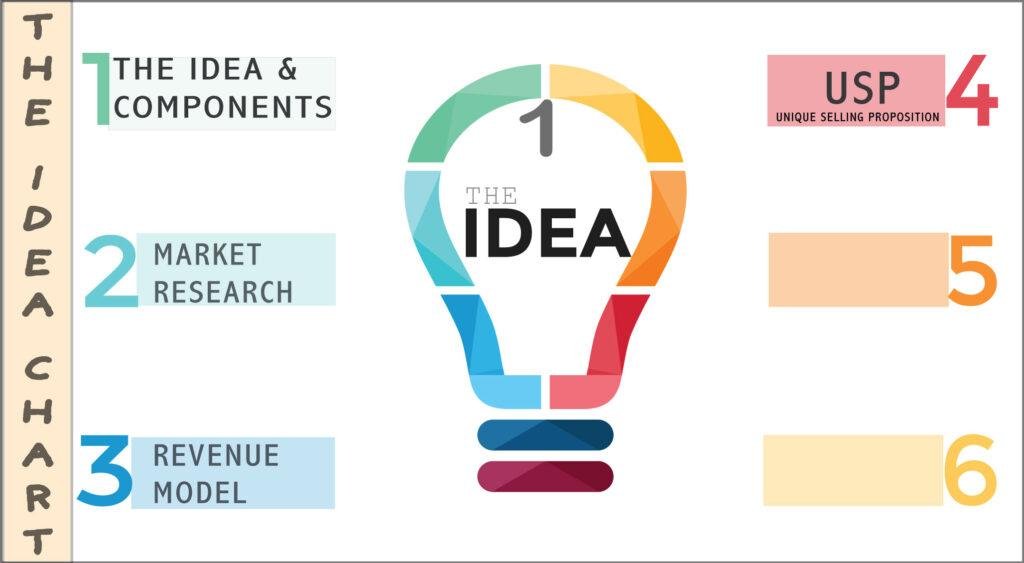- Idea To Profit Series: The Ultimate Guide
- Idea To Profit Series: The Idea And It’s Components
- Idea To Profit Series: Market Research
- Idea To Profit Series: Revenue Model
- Idea To Profit Series:Unique Selling Proposition
- Idea To Profit Series: Testing An Idea
- Implementation, Next In The Idea To Profit Series
Unique Selling Proposition, the next installment in the Idea To Profit series.
This is the fourth installment in the series. If you haven’t done so already, start with the introduction.
While many businesses exist without having to define their unique selling proposition, creating one at the start of a new business or implementing one in a business that already exists would be a smart strategic move. A business owner, new or old, puts his/her self in a strong position when the owner can define the specific benefit of that business. When the owner can articulate why that business is different, what the benefit is of choosing to do business with that business and not its competitors. But, let’s start from the beginning with defining what a unique selling proposition (USP) is.
What is a Unique Selling Proposition (USP)?

According to Wikipedia, a USP refers to the unique benefit exhibited by a company, service, product or brand that enables it to stand out from competitors. Another way to view a unique selling proposition is simply the uniqueness of a business product or service. It is the quality or characteristics of the product or services offered that will make the business stand out from the competition.
To further clarify its meaning, here is the unique selling proposition for a company many are familiar with, Apple.
“To provide premium, high-quality innovative and user-friendly technology products and services that enrich the lives of its customers.”
Apple is one of the most recognizable brands in the world. Their USP, though simple, focuses on the idea that their products are superior in quality and user friendly. Notice they didn’t mention their products are higher priced than most. Yet, Apple consumers will pay that higher cost because, in their USP, they hone in on the quality and adaptability of their products.
A good, unique selling proposition equals a powerful business strategy because it guides branding and marketing decisions.
Ask yourself the following questions before investing more into an idea to profit objective:
- What makes the product/service special?
- Is the potential product/service faster, cheaper, or more convenient?
- What are the advantages over potential competitors?
- Are there technologies and expertise that would make the product or service stand out?
- Are the right team/support in place to achieve the business objectives?
As mentioned earlier in the series, as an entrepreneur, you need to have a telescope in one hand and a microscope in the other. Think like a visionary who can produce a product or service others can believe in and will want.
What a Unique Selling Proposition Is Not

In short, a unique selling proposition is not marketing offers, discounts, free shipping, return policies, etc. These services or perks may grab potential customer’s attention for a moment, but they cannot sustain the consumers’ interest in a particular product or services for an extended period. To assert this, as a consumer, can you recall any products or services you’ve used over an extended period that were simply about free perks or a big discount?
How many came to mind?
Any products or services you love or buy again and again, usually isn’t about the perks, but about the benefit and how that product or service enhance your life.
- Why do you love them?
- What impressed you?
The right marketing can be convincing and effective, but they cannot replace finding the right customers, willing to support your brand again and again. A USP can effectively help to identify the right ones.
USP from a Wider Perspective

Here is a fact: Most business doesn’t exist without competition. From a wider perspective, the entire world is one market. It’s of the utmost importance that new or experienced business owners keep themselves abreast of not just local businesses, but nationally as well as globally.
Why is this important? Because it’s easy to find out that it’s not just the entrepreneur that have choices, but the consumer as well. When the choice rise beyond a few to an almost limitless option, overwhelm becomes the effect. Still, consumers try to make the best possible choices. Brands that stand out from the rest are the ones that’s position to succeed.
A unique selling proposition now becomes a tool that will help businesses stand out and get noticed. The formula for this approach is simple:
USP+BRANDING+MARKETING.
How to Be Different Using a USP

Here is another way to look at a USP. It plays to the strengths of a business. It aligns with the objectives of a business. Differentiation is necessary in order to reach the target audience and what they care about and want. If a business cannot show the power, the advantages of their product or services, then the business messaging will not be nearly as effective. With this in mind, consider the suggestions below while creating/writing your business’ unique selling proposition.
Making your USP compelling
It must focus on what ideals the consumer value. If a product or service is not something a target customers genuinely care about, or want, then branding and marketing will not be effective.
It must be assertive yet defensible
A business message is the selling point. It will be the point of contact between it and its potential customer. However, a written message is not enough. A business must defend what’s portrayed in the message. In short, be willing to back up the words.
Focus on potential customers’ problems and solutions
Customers and their experience are the heart of an effective, unique selling proposition. Keep in mind that most make a choice quickly. Still, it’s possible to win them over by offering solutions to their problems and by understanding their needs.
The foundation of a business’ USP should be the values of the business
A USP is not just a set of words that represent what a business is focused on accomplishing. It also represents what the business believe in or stands for. Don’t have a mission or vision statement? [thrive_2step id=’8739′]Click here for a free template to create one.[/thrive_2step]
Strength should be the focal point of a business
This is an important aspect of a business’ USP because, in order to highlight its strengths, it must acknowledge its weaknesses. It’s with honesty that a business can answer the question of how to truly meet the needs of its customers. A business’ strength also recognizes the truth about their product, their price, their marketing strategy, and the accessibility of their product or services.
Keep the competitions in mind
A business’ strengths and weaknesses are important, but so are their competitors. A Comparison of theirs and yours opens the door to identifying how to stand out from the rest. How to contrast from the rival.
Additional Tips for Choosing a Unique Selling Proposition
There are no one-size-fits-all formula for developing a USP, but here are a few steps to employ in order to create an effective USP for your business.
- Be clear, concise and confident – Keep it short, sweet, and to the point.
- Highlight the benefits and prepare to stand by your words
- A USP should be customer-focused–Pinpoint their needs and offer a solution.
- Test and revise your USP if necessary. How customers respond determines if a USP is right. Curious customer, who shows interest, is optimal.
- Promote your unique selling proposition. Once you’ve translated a USP into the right words, it’s time to get the word out there.
Summary
Every business is unique and so are its values. However, there are a few common denominators that almost every successful business shares: customer-centric service, which is the act of providing what a business promise. Which should be its quality and uniqueness. A USP is an important key performance indicator (KPI) because it determines the life and success of a business.
As someone interested in turning an idea into profit, ask yourself, what’s unique about your idea? Does the customer base exist? Are your values in line with what you want to achieve? Are you fulfilling the bigger purpose of filling the needs of others? How you answer the above questions determines if the potential exists to turn an idea into a successful, valued business.









